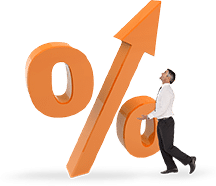Top 5 Facts You Need To Know about Unsecured Debt
In 2017, the aggregate credit card debt level in the United States surpassed one trillion dollars. Credit card debt is the most common form of unsecured debt, and among the easiest to obtain. Credit cards, when used responsibly, are a useful tool in helping to build a healthy credit profile that can aid later in life when it comes time to borrow significant sums for a home mortgage or auto loan. However, credit cards and other forms of unsecured debt are not always utilized in a healthy and responsible manner, and it is important to fully understand the territory of unsecured debt – its pros and cons – especially if you’ve already got your share of it. What follows are five things that you need to know about unsecured debt.
Related Category: Debt Consolidation

1. What is Unsecured Debt?
Unsecured debt refers to borrowings that are not backed by collateral, in contrast to secured debt, which is backed by collateral – such as a mortgage backed by a house or an auto loan backed by a car. The most common forms of unsecured debt include credit card debt, student loans, personal loans and medical debt. Unsecured debt carries more risk to lenders than does secured debt, as a creditor may be forced to sue an unsecured debtor in default for repayment, as there is no collateral to be seized in the event of non-payment. Because of this added risk, unsecured debt tends to carry higher interest rates than secured debt, making it more expensive for the borrower.
2. Since Unsecured Debt Isn't Backed by Collateral, What Happens if I Don't Pay it Back?
When a borrower falls delinquent in unsecured debt repayment, the lender lacks the luxury of seizing any property as collateral for the unpaid debt. However, that isn’t to say that creditors have no recourse. When a debtor falls delinquent in unsecured debt repayment, initially a creditor will reach out to structure a repayment schedule. If this proves unproductive, the creditor has the options of reporting the delinquent debt to a credit bureau, turning the debt over to a collections agency, or filing a lawsuit. Following a lawsuit, a court can order to have your wages garnished or place a lien on certain assets until your debt gets repaid. Clearly, none of these outcomes prove especially constructive for the debtor’s quality of life and credit profile.
3. Benefits of Unsecured Debt
One of the benefits of unsecured debt to the borrower is that there is no associated asset risk. If a debtor falls behind on unsecured debt payments, there is no risk of foreclosure or repossession, for example. However, as with any debt, failure to pay off unsecured debt obligations in a timely and consistent manner will cause damage to a debtor’s credit score and profile. Still, credit card debt, when handled responsibly, offers significant advantages to the debtor, including allowing for the opportunity to enhance a credit profile that can lead to favorable borrowing terms from subsequent lenders in the future. The relative ease of getting approved for an initial credit card or extending an existing credit line adds a layer of flexibility into a carefully structured monthly budget, as well.
4. Disadvantages of Unsecured Debt
Unlike with many secured debts (such as a home mortgage), the interest expense associated with unsecured debt is not tax deductible. This important financial reality, along with the higher interest rates charged for unsecured debt (given its lack of collateral backing) make the overall cost of carrying unsecured debt significantly higher. Additionally, when a borrower’s credit profile is relatively weak, it can be more difficult to get approved for unsecured debt, and even if approved, interest rates and associated terms may prove unsatisfactory to the borrower.
5. My Unsecured Debt Level is Too High.
One of the benefits of carrying unsecured debt is that it does allow for certain solutions in the event a debtor accumulates an unmanageably high level of unsecured debt. Debt management plans, debt consolidation loans and pursuing debt settlement represent viable options for an individual who becomes burdened with onerous amounts of unsecured debt.
A debt management plan (DMP) is a common solution for individuals who are carrying too much unsecured credit card debt and are having difficulty paying bills to a number of different creditors each month. A reputable credit counseling agency can structure a DMP for you in which you make one streamlined payment each month to the counseling agency, who in turn allocates funds to your various creditors. A DMP will result in a lower blended monthly interest rate and monthly payment while giving you the opportunity to demonstrate a consistent payment history, rebuild your credit profile and get out of debt over a three- to five-year time period.

A debt consolidation loan helps simplify matters by paying off your various creditors and allowing you to make one simple monthly payment, usually at a lower blended overall interest rate. Meantime, debt settlement can be a good idea when a debtor has already fallen behind on a number of different credit card accounts. Creditors recognize that delinquent accounts that are approaching charge-off status may eventually become worthless to them, and are often willing to accept less than the total balance owed as a result. A debt settlement firm may be able to successfully negotiate a lower balance payoff – and sometimes even get the creditor to mark the account as “paid in full” on a credit report.
If you are struggling with high levels of unsecured debt, contact us here at United Settlement to discuss the various options above as they pertain to your specific financial situation.


